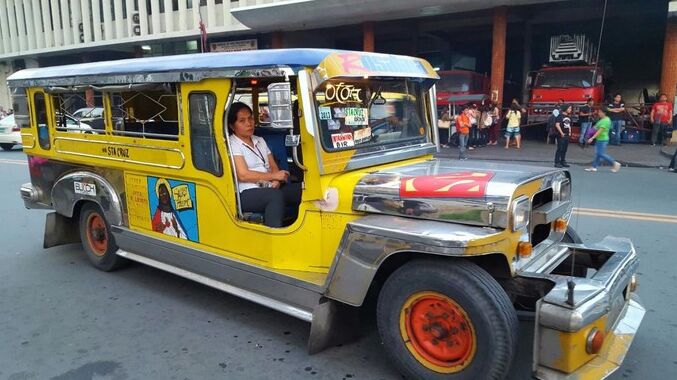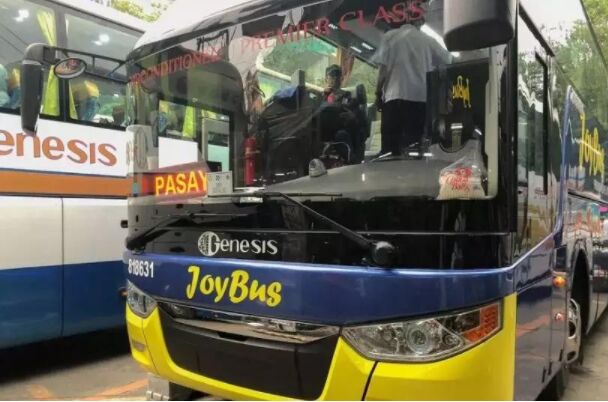您好,欢迎光临EasyGo易游国际,我们提供全球【签证办理】【移民绿卡】【机票预订】【公证认证】【法律支援】【商标注册】等各国出入境服务

THE OFFICIAL PARTNER
HOT LINE
19896549345
中文 / English
Manila, Philippines, practical transportation strategy! It is recommended to collect for later use.
For friends who travel to Manila, Philippines for the first time, transportation and travel are factors that must be considered. Walking around a strange city can be daunting, especially when you don't know the local language. Regarding the urban traffic problem in the Philippines, EasyGo International has compiled this detailed Manila practical traffic strategy today, so that you can get familiar with and adapt to the city more quickly.
Overview of Manila City
Manila is the capital city and the largest port of the Philippines. It is a city with a history of more than 400 years. On the basis of Indian civilization, Chinese civilization and ancient civilization in Central Asia, it integrates the Western civilizations of Spain and the United States to form a combination of East and West. culture. Walking on the streets of Manila, you will see Chinese-style arcades, western-style churches and castles, and modern commercial buildings coexist day and night, full of exotic atmosphere. On both sides of Binhai Avenue, there are rows of high-rise buildings, tall and straight coconut trees and verdant palms, covering each other.

[Taxi]]
By far, a taxi is the easiest and most convenient way for a foreigner to travel through the city. Most drivers are friendly and speak some English. If your English is better, they will be very willing to talk to you.
Taxis in Manila are divided into white and yellow. The starting price of a white taxi is about 30 pesos, the jump price is 2.5 pesos, while the yellow taxi is more expensive, the starting price is 70 pesos, and the jump price is 4 pesos. A regular taxi windshield will have a paper with the word "Meter tested" on it, which means you can type a watch. However, before getting on the bus, I still need to ask if I can use meter to make a watch, and I still need to bargain on the spot.
Tips:
1. Never run to a place with a pink fence to stop the car. Such behavior will be caught in the police station.
2. After getting on the bus and finishing the destination, it depends on whether the driver has typed the meter. If he does not remember to remind the driver "The Meter Please", but if the driver refuses to type the meter, he can get off directly. However, we should still pay attention to friendliness. After all, we should still pay attention to safety when we go out.
3. If a driver is unwilling to type the watch or the watch is broken, but if you are in time for the traffic jam between 5 pm and 8 pm, even if Taxi quotes tens of pesos more, it is acceptable.
4. The Philippines generally has the habit of tipping, so he usually gives the driver the whole money, he will not change you, the driver will think it is a tip for him, so remember to bring his own change.
[Tricycle]]
Tricycle is a small means of transportation in Manila, which is very practical in small cities and countryside. Tricycles are divided into electric tricycles (Cricycle taxi) and human tricycles (Pedicab or push bike taxi), which are different from domestic electric tricycles, that is, a motorcycle is welded next to a shed. The general fare is 15 pesos.
But it should be noted that this kind of car is not just for you, it can basically plug a few people. This kind of car can't take you very far, usually around, but it is indeed a very convenient and economical way of transportation. Human tricycles are the same as those in China. The price depends on your negotiation with the driver.

[Bus]]
In Manila, buses are the most common means of transportation used by locals. The price is variable, depending on the distance you take and the extra charge for the bus. For example, air-conditioned buses will certainly be more expensive. Buses usually stop anywhere along the way, not just at designated stops. Although the authorities have been trying to change this situation, they have been hard to change.
At each station, the conductor will get off and tell the passengers waiting for the bus the route of the bus, and then the passengers in need will get on the bus. After getting on the bus, the conductor will come to collect the money. The fare for an ordinary car is about 2.5-3 pesos, and for an air-conditioned car is about 5-10 pesos. Note that the ticket given to you by the conductor should not be thrown away. Sometimes someone will come and check your ticket. When you want to get off, stand by the door and the conductor will tell the driver. Sometimes the driver will not stop completely, he will drive slowly and let you jump out of the car.
[Ferry]]
Banca Boats (Banca Boats) is a characteristic transportation method in the Philippines, because the Philippines is an island country, and the previous water transportation method is still used. The boats have different shapes and colors, and can take many people. There are also single-person fishing boats.
Ferry fares are divided into three types, P25, P35 and P45. From Manila's North Port and South Port, there are many ferries sailing to many major islands in the Philippines. WG & A SupperFerry, Negros Navigation and Sulpicio Lines are the largest ferry companies. The timetable and price of the ferry can be found on the website and travel agency, and can be prepared in advance.
Well, these are the most common public transportation in Manila. If someone walks together, I suggest you can still experience various ways and feel the life of the local people. You will have more experience, more fun and of course save some money.
Relative Services
菲律宾
Philippines
VIP Price: ¥360000/人起
菲律宾
Philippines
VIP Price: ¥9495/人起
菲律宾
Philippines
VIP Price: ¥3700/人起
菲律宾
Philippines
VIP Price: ¥62000/人起
瓦努阿图
Vanuatu
VIP Price: ¥1020000/人起
Popular Services
Recommend
Hot
List of holidays in Indonesia in 2023 1
Assault! Multi-sector joint raid in the Philippines! Detain the Chinese, 255 of them! 3
Sudden! 6 Chinese kidnapped by 5 in Philippines...... 4
"Chinese businessman frightened by kidnapping"? Philippine police concealed "kidnapping case"? 5
Philippines 2024 statutory holidays and special holidays (with salary algorithm) 7
Do Japanese visa holders travel to the Philippines visa-free? 8

出入境顾问 在线咨询

在线客服

在线客服
联系方式:19896549345,您可以电话或者微信直接沟通。

加我好友,随时为您解答出入境问题



